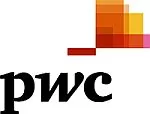Key points
Many insurance companies are in the process of finalising their first set of annual financial statements applying IFRS 17 'Insurance contracts' for their 2023 reports. Disclosures will be vital in assisting investors to understand the fundamental changes in accounting introduced by IFRS 17. This In brief has some top tips on key areas of importance when it comes to disclosures.
What is the issue?
IFRS 17 is effective for annual reporting periods beginning on or after 1 January 2023 and represents a fundamental change in accounting in the insurance industry. Its predecessor, IFRS 4, largely allowed companies to continue applying many different accounting approaches across jurisdictions and product types based on pre-existing local GAAP. IFRS 17 introduces increased comparability across the insurance industry, with one set of principles based requirements for recognition, measurement, presentation and disclosure.
However, the insurance industry is complex, and so is the accompanying accounting and reporting. This places particular importance on high- quality, company-specific disclosures that explain the effects of IFRS 17, and the differences compared to previous reporting, in the first set of IFRS 17 annual financial statements.
Key question to think about when preparing disclosures for the first set of IFRS 17 annual financial statements include:
- Has the impact of the transition to IFRS 17 and an explanation of the transition methods used, been explained in sufficient detail?
- Have all significant judgements and estimates been set out clearly and in sufficient detail?
- Has all material accounting policy information been disclosed in a way that is company specific?
- Have the disclosures been provided at the right level of aggregation?
- How has IFRS 17 changed the use of alternative performance measures?
Has the impact of the transition to IFRS 17 and an explanation of the transition methods used, been explained in sufficient detail?
For the transition to IFRS 17, companies are exempt from the general requirement in IAS 8 to disclose - for the current period and prior period presented on first application of IFRS 17 - the amount of the adjustment to each financial line item affected by the transition from IFRS 4 to IFRS 17. However, it will be important for investors to understand the quantitative impact on equity at the transition date. Companies should consider providing qualitative disclosure around this impact - for example, setting out the key drivers of change (such as changes in the policy relating to discounting, or changes in the pattern of profit recognition).
IFRS 17 provides three different transition methods to determine the carrying amount of insurance contracts at the transition date: a fully retrospective approach, a modified retrospective approach, and a fair value approach.
Companies are required to provide:
- a reconciliation of the contractual service margin and the amount of insurance revenue separately for each transition method used; and
- an explanation of how they determined the measurement at the transition date, so that investors can understand the nature and significance of the methods and judgements applied (for example, disclosing which modifications a company used in the modified retrospective approach, and disclosing the valuation inputs used applying the fair value approach).
[ IAS 8 para 28(f)]. [ IFRS 17 para C5]. [ IFRS 17 para 114]. [ IFRS 17 para 115].
Companies should clearly distinguish between key judgements and major sources of estimation uncertainty, as identified applying IAS 1, and other judgements and estimates made in applying IFRS 17. Disclosure should be company-specific and provide details of the judgements made by management, with particular focus on areas where IFRS 17 is not prescriptive (for example, relating to judgements applied in determining the pattern of the provision of services for different products for the purpose of identifying the amount of the contractual service margin to recognise in each period).
For significant sources of estimation uncertainty, companies should quantify the assumptions underlying significant estimates and provide meaningful sensitivities and/or ranges of reasonably possible outcomes. Measuring insurance contract liabilities, by nature, requires a number of assumptions in determining the expected future cash flows, the discount rates to apply to measure those cash flows at present value, and the risk adjustment for non-financial risk. This includes assumptions about the likelihood and timing of insured events and other events such as contract lapses, interest rates and other financial risks such as inflation rates.
[ IAS 1 para 125]. [ IAS 1 para 129]. [ IFRS 17 para 117].
At the same time that IFRS 17 became effective, amendments to IAS 1 became effective that provide additional helpful guidance on assessing whether accounting policy information is material (see link to further guidance below). The amendments specify that accounting policy information that focuses on how a company has applied IFRS requirements to its own circumstances provides company-specific information that is more useful than standardised information, or information that only duplicates or summarises IFRS requirements (often referred to as 'boilerplate language').
[ IAS 1 para 117B]. [ IAS 1 para 117C].
Relevant guidance
Practice Aid on the Accounting Policies Disclosures (Amendments to IAS 1).
IFRS 17 requires companies to disclose information in the notes at a level of detail that, together with the primary financial statements, gives investors a basis to assess the effects that insurance contracts have on a company's position, performance and cash flows. Disclosures need to be aggregated and disaggregated at a level so that useful information is not obscured.
Examples of aggregation bases that might be suitable to meet that objective are:
- by contract type (for example, major product lines);
- by geographical area (for example, country or region); or
- by reportable segment, as defined in IFRS 8.
[ IFRS 17 para 95]. [ IFRS 17 para 96].
Due to the lack of requirements in IFRS 4, many insurance companies have made use of a number of alternative performance measures (APMs), and they may have placed a high prominence on those measures.
Now that IFRS 17 applies, APMs used are likely to change. It is important for companies to explain the APMs being presented, how those measures have been affected by IFRS 17, and to consider any expectations communicated by relevant regulators. With the new IFRS 17 measures of revenue and profit, regulators and investors might expect less prominence on APMs compared to previously.
Relevant guidance
ESMA guidelines on alternative performance - FAQs.
FRC thematic review: Alternative Performance Measures (APMs) - Oct 2021.
What is the impact and for whom?
All companies that issue insurance contracts within the scope of IFRS 17 are impacted.
When does it apply?
IFRS 17 became effective for annual reporting periods beginning on or after 1 January 2023.
Where do I get more details
Insurance contracts: Illustrative IFRS consolidated financial statements - IFRS 17
The content of this article is intended to provide a general guide to the subject matter. Specialist advice should be sought about your specific circumstances.


